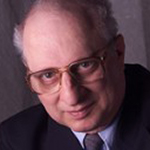November 27, 2015
Surviving suicide
Suicide not only snuffs out a life. It also leaves wounds on those left behind. This was the concern addressed at a morning seminar in Ottawa on September 10. Jennifer Ward was the keynote presenter at this program sponsored by the Ottawa Suicide Prevention Coalition.
Ward is a survivor of suicide. She and her husband adopted the daughter of a friend who killed herself. Ward, a social worker, serves as a crisis support worker for the Ontario Peel Regional Police Department and is Survivors Chair of the Canadian Association for Suicide Prevention.
She spoke about the numbers. Annually 900,000 people worldwide take their own lives, 4,000 in Canada. But the ripple effect is substantial. One estimate is that each of these deaths has an impact on from six to ten other people. A much larger estimate finds 25 to 100 people who are exposed or bereaved, either short- or long-term. Suicide is not just a private act.
In addressing the problem one looks at prevention, intervention, and postvention, that is, help for survivors. She listed factors in leading to suicide: ability to inflict self-harm, failed sense of belonging, and a sense of being a burden. “But sometimes these do not fit,” she added.
Ward explained that grief over suicide is not the same as other grief. It is characterized by shame, stigma, and isolation. And it is a grief that can be traumatic, even resulting in post-traumatic stress disorder (PTSD). There is also an increased danger of suicide among survivors. Suicidal thoughts are often part of the grieving process. First responders may also experience traumatic consequences of suicide.
Survivors of suicide may suffer a variety of emotions: shock, deep sadness, anger and self-blame, relief, denial, fear, and depression. Relief may occur because the person’s suffering is over. In reaction to the feeling of relief, the survivor may experience shame and guilt. Thoughts of suicide would not be unusual for survivors. The suicide may also precipitate a wide variety of spiritual or religious reactions.
If someone to whom you are close has killed himself, “You have a lifetime membership” in the tribe of survivors, a membership that can be helpful in coping. The connection with other survivors may provide peer support.
Often people ask how the person died. That is an impertinent question. We would not want a description of exactly how someone died in an automobile accident. Yet, details may be pertinent in matters of prevention. Thus, if we know that a number of people kill themselves by throwing themselves from a bridge, fencing the bridge could serve as a preventative.
The survivor needs to “learn to live in the presence of absence.” Ward said that the first year after the event is the most challenging. Survivors never get over the death, but they can “recalibrate”. They need to be aware of the fact that grief may be triggered by things that remind one of the deceased—a song or a person who resembles the person, for example. The frequency, intensity, and duration of grief will vary from person to person, but it never goes away. Many people find it helpful to tell their story, and a rough yardstick is that they might be ready to do so a year after the event.
There are various websites that promote suicide prevention and survival afterwards, among them www.suicideprevention.ca. Survivors may want to contact Bereaved Families of Ontario, a self-help organization with chapters across the province. Similar organizations exist in some other provinces.
At the seminar, Ottawa City Councilor Shad Qadri spoke of Ottawa’s unique municipal program, offering all 17,000 of the city’s employees the opportunity to participate in a training program for suicide prevention in the workplace.








